We chose January, the hottest month in Argentina, for our visit to the country. The region is famous for its natural wonders, and we certainly dreamt of going to Patagonia, wanted to walk around its national parks, admire the huge breathtaking waterfalls, and see glaciers.
However, we realized it was quite impossible to try to accomplish that with two-year-olds, so we decided to stay in Buenos Aires during our first visit to Argentina to explore the country and its culture from the capital’s perspective.
History of Buenos Aires
Buenos Aires — one of the largest capitals in the world — is located in the east of the country, on the shore of the Río de la Plata. Buenos Aires stands out among other cities on the continent as the most “European” and multinational city and the place that is totally untypical of Latin America.
It’s interesting that the city, whose name can be translated as “fair winds”, was founded twice. The first settlement established by conquistador Pedro de Mendoza in 1536 completely burnt down during the war with the Indians. The construction of a new city began in 1580 and was managed by Juan de Garay.
At first, the settlement was part of the Viceroyalty of Peru, but it was developing very slowly — only about 500 people lived there in 1610. 70 years later, the Portuguese built a port of Colonia del Sacramento on the shore of the Río de la Plata to bring goods to Buenos Aires illegally and then export them to Brazil. Oddly enough, the smuggling helped the city to expand. In 1776, it was already the capital of the Spanish Viceroyalty of the Río de la Plata.
In the early 19th century, the mood of the population changed — the citizens didn’t want to be part of the Spanish monarchy anymore. Inspired by the British colonies in North America that managed to win their independence, Buenos Aires’ aristocrats decided to overthrow Viceroy Hidalgo de Cisneros. The May Revolution that began in 1810 resulted in the establishment of the first parliament. Officially, Argentina was declared independent in 1816.
In the mid-19th century, thousands of Europeans, including the Spanish, French, and Italians, came to Buenos Aires, which led to the rapid development of the city. The second wave of immigrants fell on the early 20th century — the promising capital of Argentina received over 5 million Europeans and Asians.
In 1976, the situation deteriorated significantly — an uprising that happened in the country resulted in the formation of dictatorship. Over the following 20 years, Argentina was controlled by the military which eventually led to an economic crisis.
We got the impression that Buenos Aires is a city in decline. It immediately struck our eye that the capital has been having hard times for the last 40 years. However, we came across buildings and even entire streets closed for reconstruction, so it’s possible that the city will be brightened and livened up in a couple of years.
As for immigrants, they are still actively coming to the country, but today they are mostly from Venezuela. Millions of Venezuelans left their country due to a crisis, and some of them settled in more developed and stable Argentina. By the way, the citizens of Buenos Aires themselves have little liking for refugees, and it’s hard to judge them for that. For example, we often met immigrants when using Uber. Of all drivers, only Venezuelans came up with different tricks and ploys to jack up the price and make us pay more.
Leisure with Kids
We chose a flat in the city centre, as usual, but when we arrived, we were surprised to see that the main residents of our quarter were Orthodox Jews with sidelocks, walking along the street in traditional fur hats despite the heat. We hadn’t expected to see a sort of Jerusalem streets in Argentina.
Later we found out that Buenos Aires’ Jewish community is huge, as Argentina was one of a few countries that didn’t refuse to accept Jewish refugees during World War II. It didn’t cause us any inconvenience, except we had to get used to the fact that almost all shops and cafes in the district were closed on Saturday. Only small Pakistani 24-hour stalls were open.
We were lucky to get a very beautiful, spacious, and nicely furnished flat in an old colonial building. We lived on one of the upper floors, so we had a stunning view of the surroundings. Furthermore, it let us use a lovely old lift decorated with stained glass.
When we were in Costa Rica, we were always on the go, went somewhere, saw something, trying to absorb all the charms of the country. Such adventures naturally bring lots of impressions but also considerably wear you out. That’s why once we arrived in Buenos Aires, we decided to relax and have a proper rest.
During this period, the boys became interested in how watches operate – and we bought them wrist watches.
But first we needed to unpack our stuff and find a babysitter. To our surprise, it was very hard to find a good babysitter — all candidates that we talked to were totally unprofessional and unable to get along with the boys. After meeting the fourth candidate, we gave up and decided to take care of Robert and Michael Jr by ourselves. As for a cleaner, we managed to find a good one quite fast.
The boys, who always used to be lively and noisy, became calmer and got interested in drawing. They could sit over pieces of paper with markers or paints for hours immersed in the process of creation.
We bought them small toy guitars, and the children were very enthusiastic about them.
Their interest in fairy tales that they started to express in Costa Rica didn’t wane as well, and they enjoyed listening to audio fairy tales. Besides, we — Michael Jr and Helen — also often read aloud to them.
In the morning, we went for walks and saw the sights trying to come back home by the daytime nap. In the evening, we were mostly out as well, as January really turned out to be a very hot month — we left our air conditioner working even at night.
Monserrat Neighbourhood
The capital of Argentina is divided into 48 neighbourhoods, but the oldest places and most interesting tourist attractions are concentrated in the eastern part of the city.
Monserrat is a cultural and political centre of the city. That’s where the Palace of the Argentine National Congress, the headquarters of both the Chamber of Deputies and the Senate, is located. The neoclassical building is covered with an 80-metre dome crowned with sculptures of chimeras. It’s just impossible to miss it.
Congressional Plaza is the place where all Argentinian roads start, which is marked by the stone Kilometre Zero monument.
The Parish Nuestra Señora de Montserrat, a small but very important temple storing a copy of Black Madonna from the Spanish Church of Montserrat (the district was named after the sculpture), is definitely worth visiting.
Plaza de Mayo
The Plaza de Mayo is the heart of Buenos Aires (as well as the neighbourhood of Monserrat) and has a special place in the history of the country. It was this square that served as a starting point for the 1580 city reconstruction. The square was also the place where the May Revolution began and the independence of Argentina was officially declared. The Plaza de Mayo still serves as the main venue for all important events, including rallies and protests.
The Plaza de Mayo is surrounded by remarkable city buildings. The Metropolitan Cathedral, the main church in Argentina, is situated here. The neoclassical shrine was built at the end of the 19th century, but in fact, the church has existed on the site since colonial times.
The City Hall is also worthy of attention. The building with a lovely tower is no longer used as the seat of the city council. Today it houses the Museum of the May Revolution.
Palacio Barolo is another building with an interesting history and an unparalleled architectural style. The construction created by Italian architect Mario Palanti and opened to the public in 1923 is a mix of Romanticism, Gothic, and eastern styles. The 22-storey, 100-metre-high structure had been the tallest building in the city for 12 years.
Today it houses the offices of over 500 companies, but anyone can enter the spacious lobby with high ceilings, stucco mouldings, and unique decorations.
Casa Rosada
The bright-pink Casa Rosada located in the eastern part of the Plaza de Mayo is the most famous building in the city. In the 16th century, a fort was located on the site, which later turned into a residence of viceroys — the Castle of San Miguel.
You can have a guided tour around the Casa Rosada’s luxurious halls and galleries and see the current president’s office only on weekends and holidays. There are lots of people who want to view the inside of the historic landmark, so you need to book your visit on the official website of the president’s residence in advance.
The square before the Casa Rosada is decorated with one of the most recognizable monuments in Buenos Aires — the Pirámide de Mayo. The 20-metre-high monument with the Statue of Liberty on top was erected in honour of the first anniversary of the revolution.

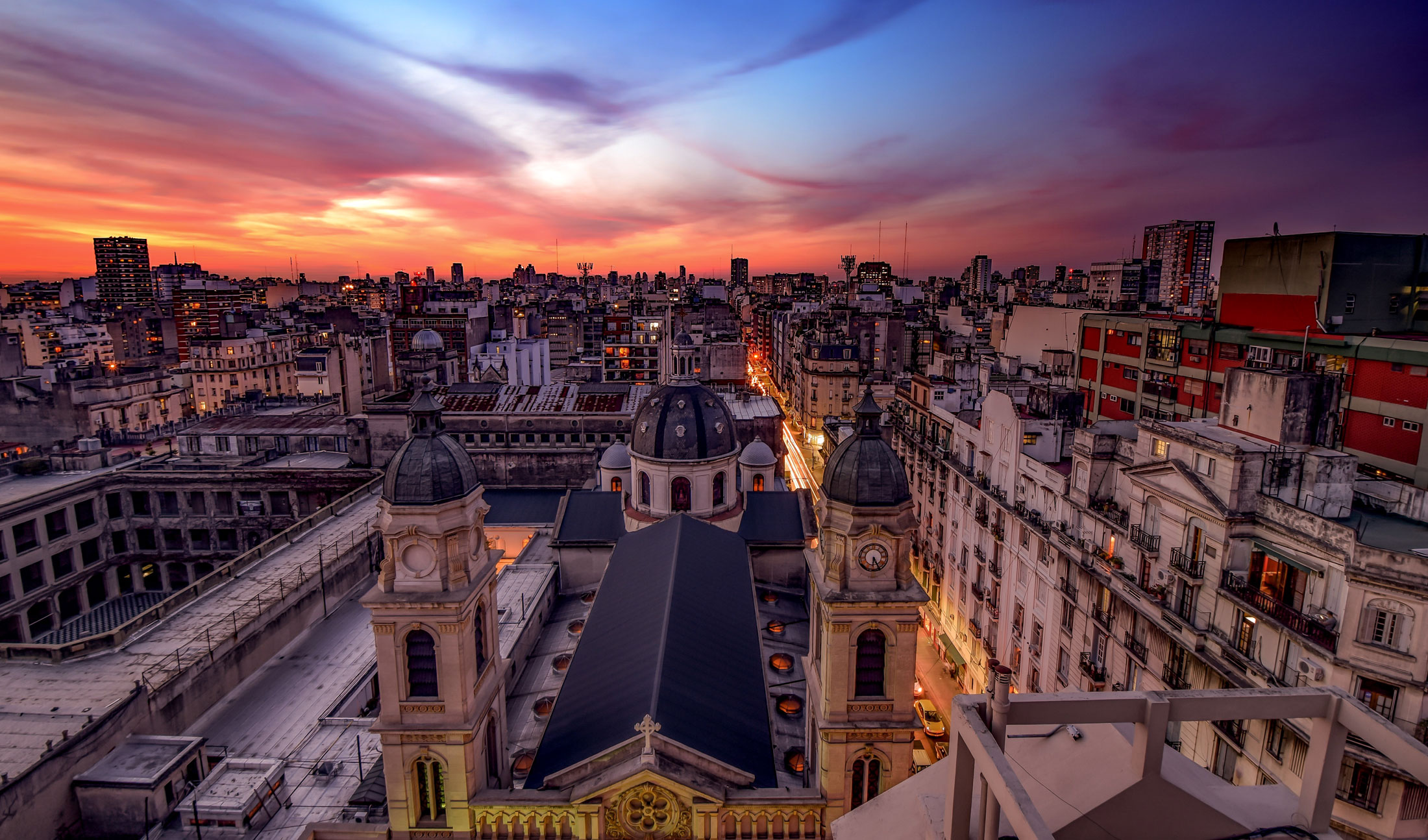
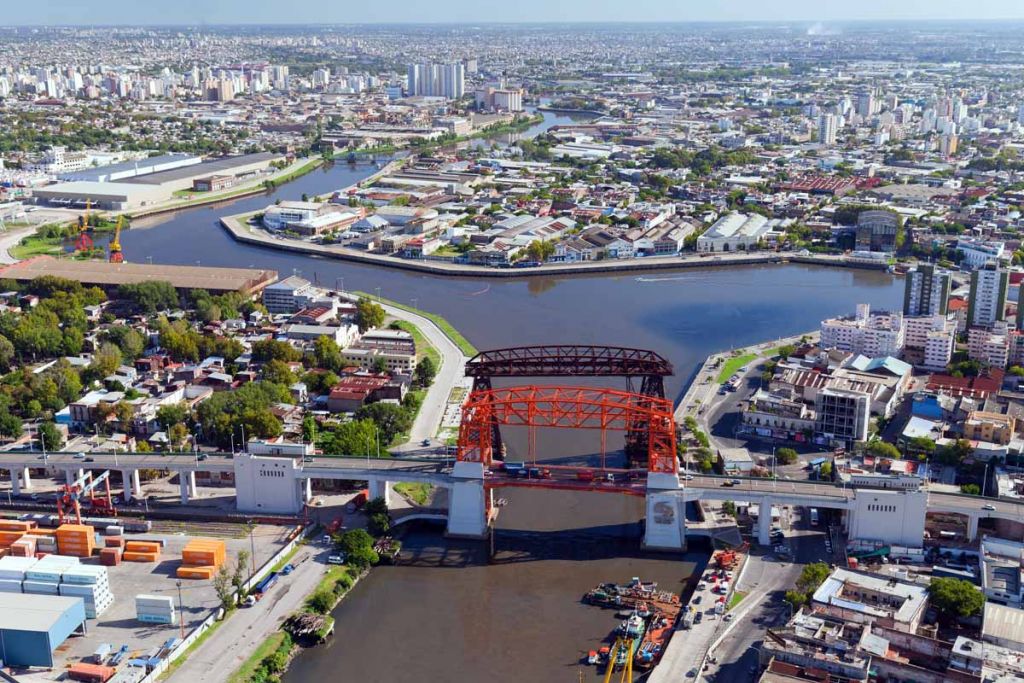
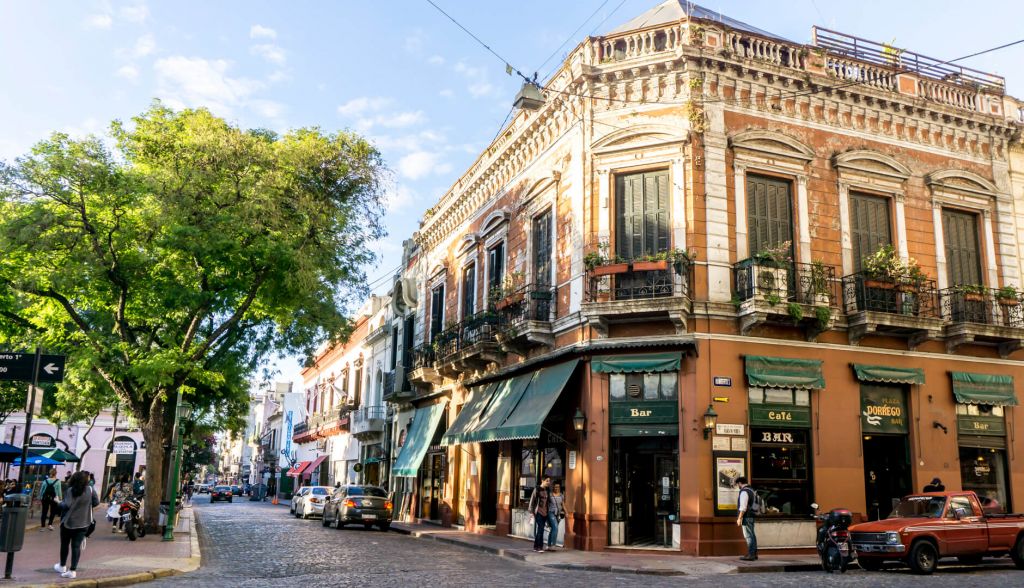
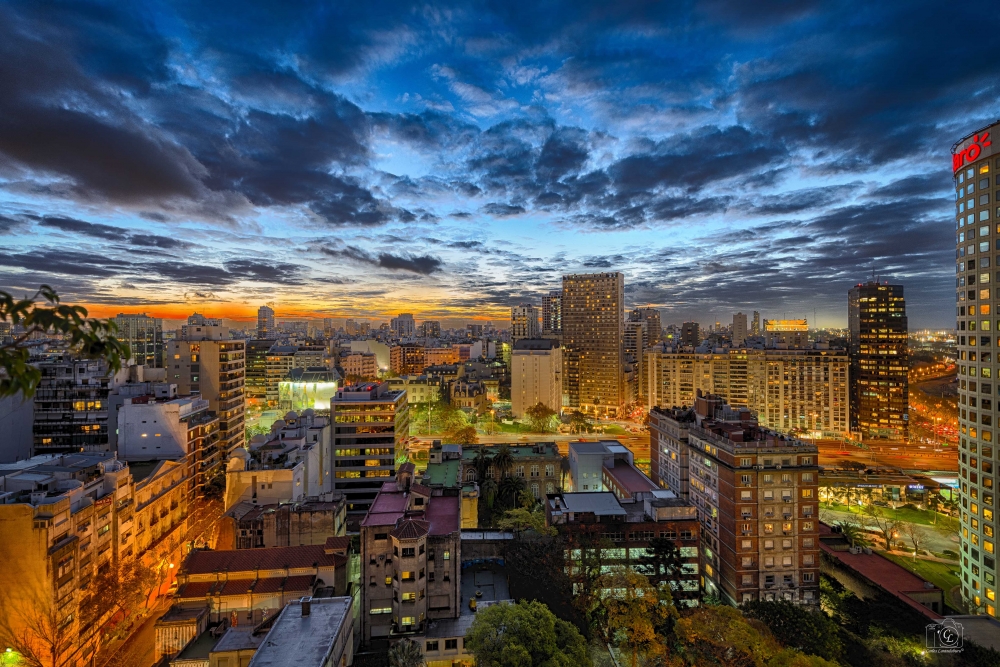


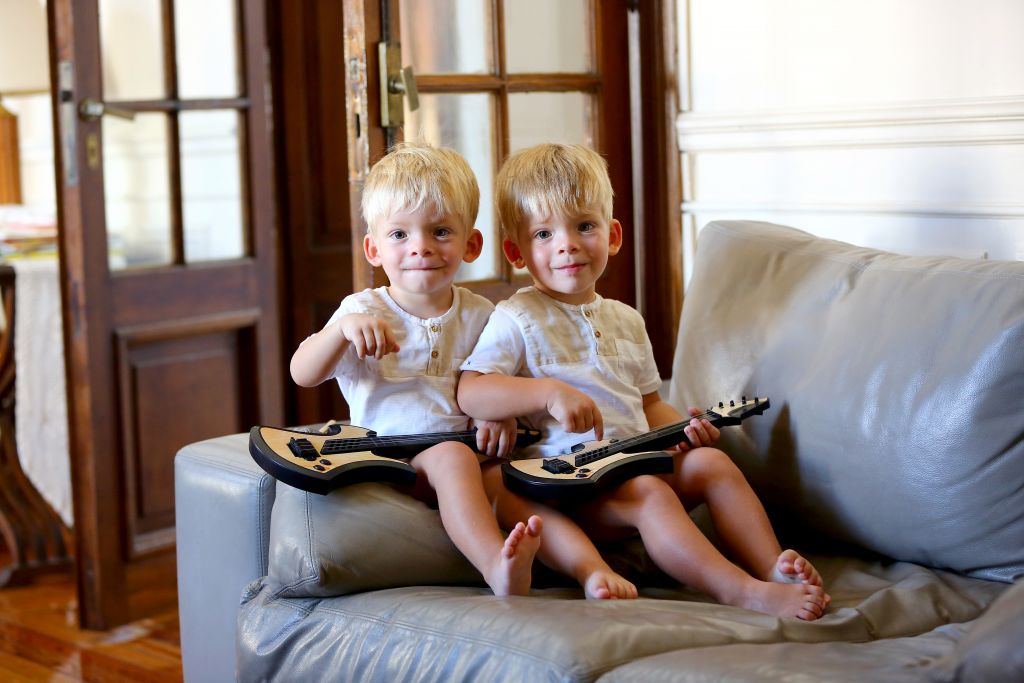
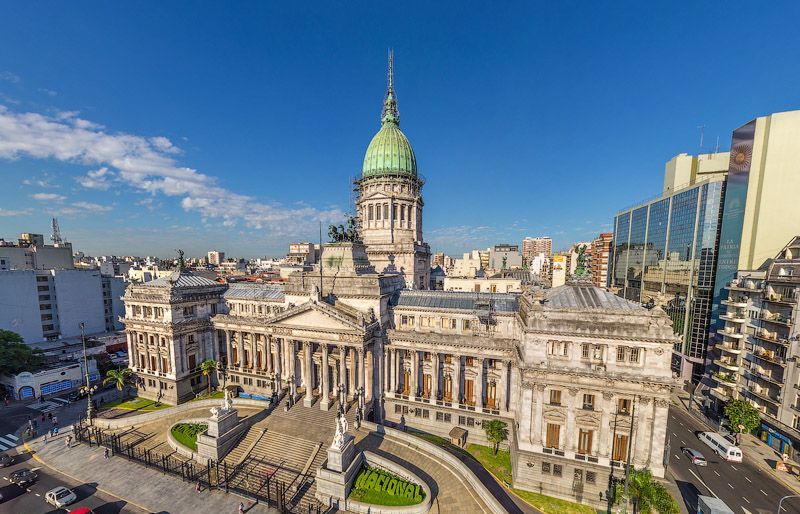
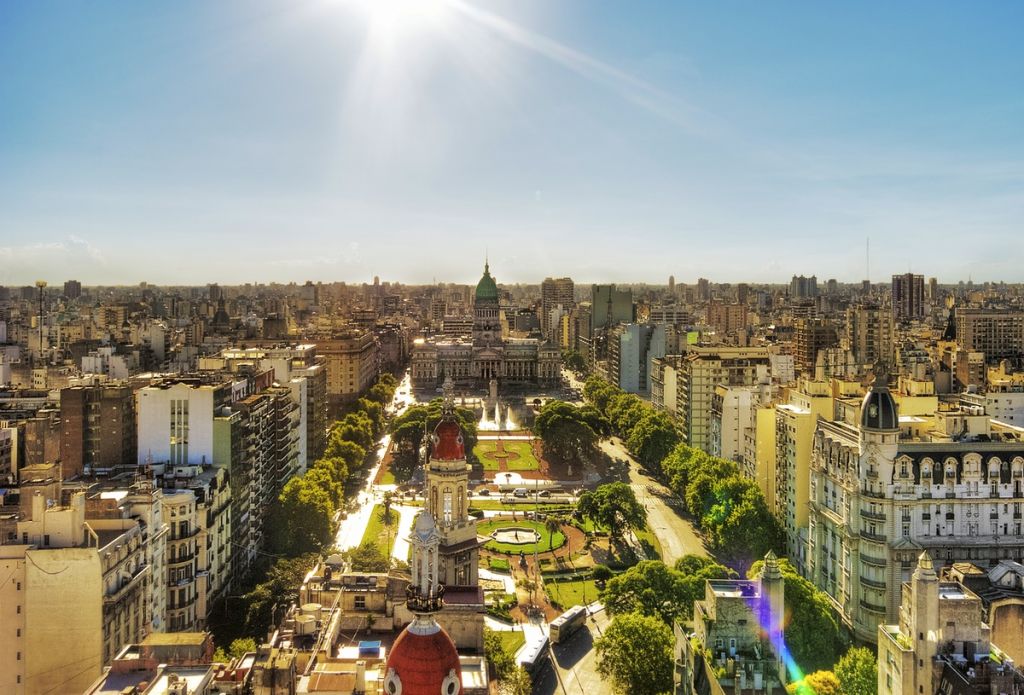
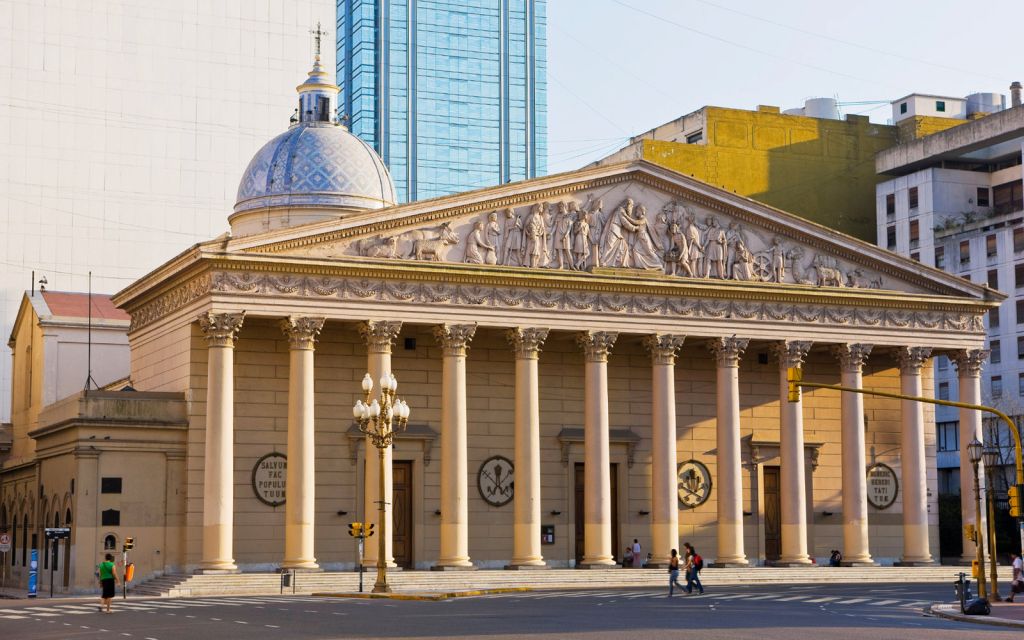
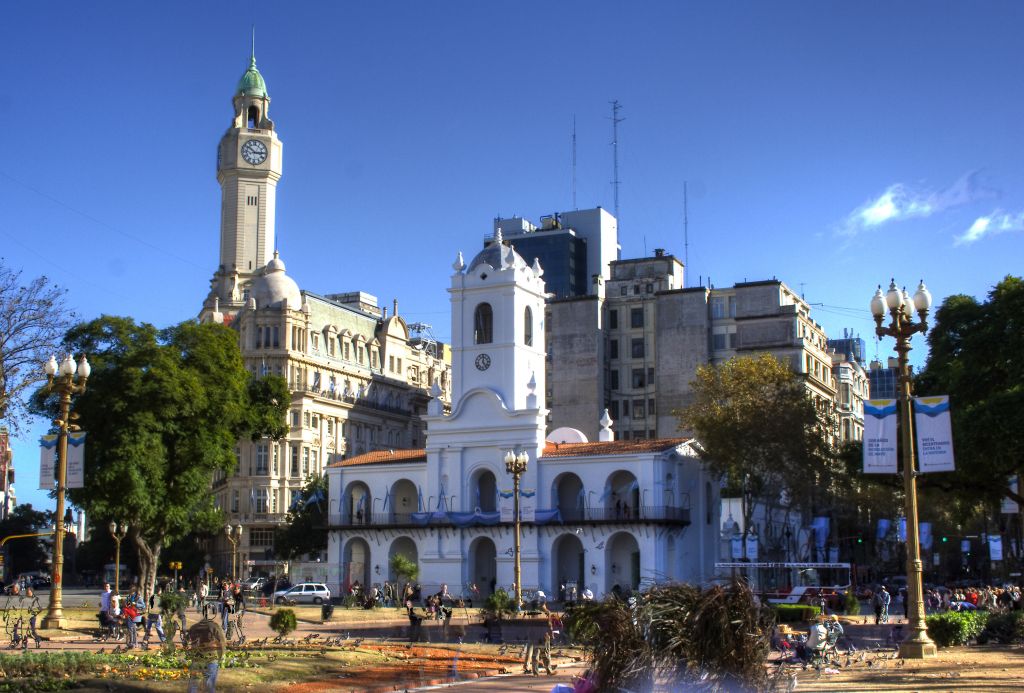
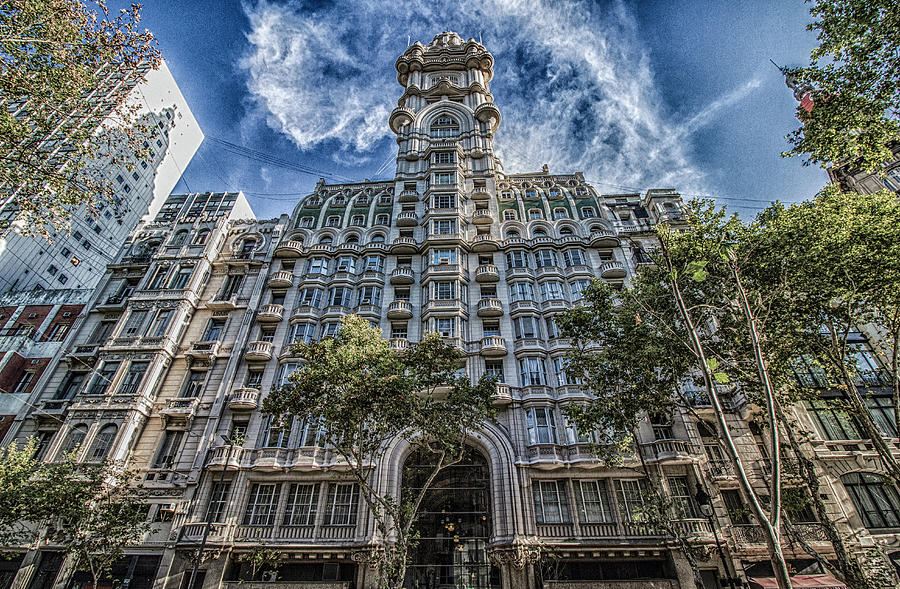
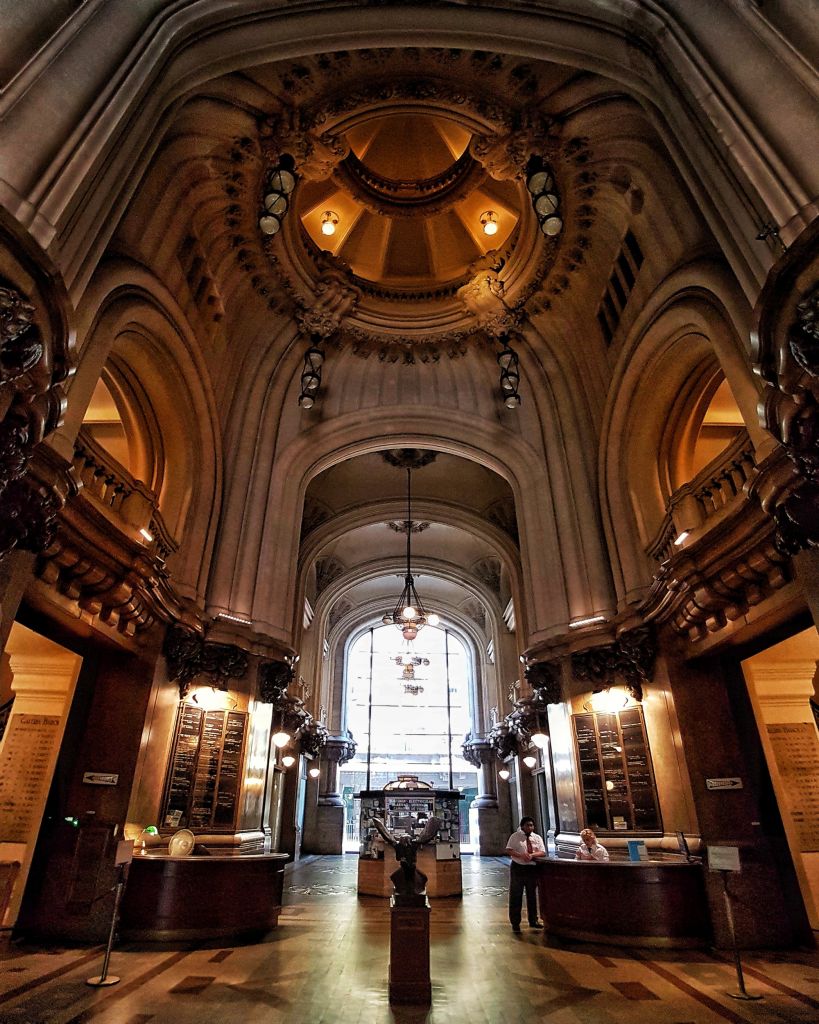
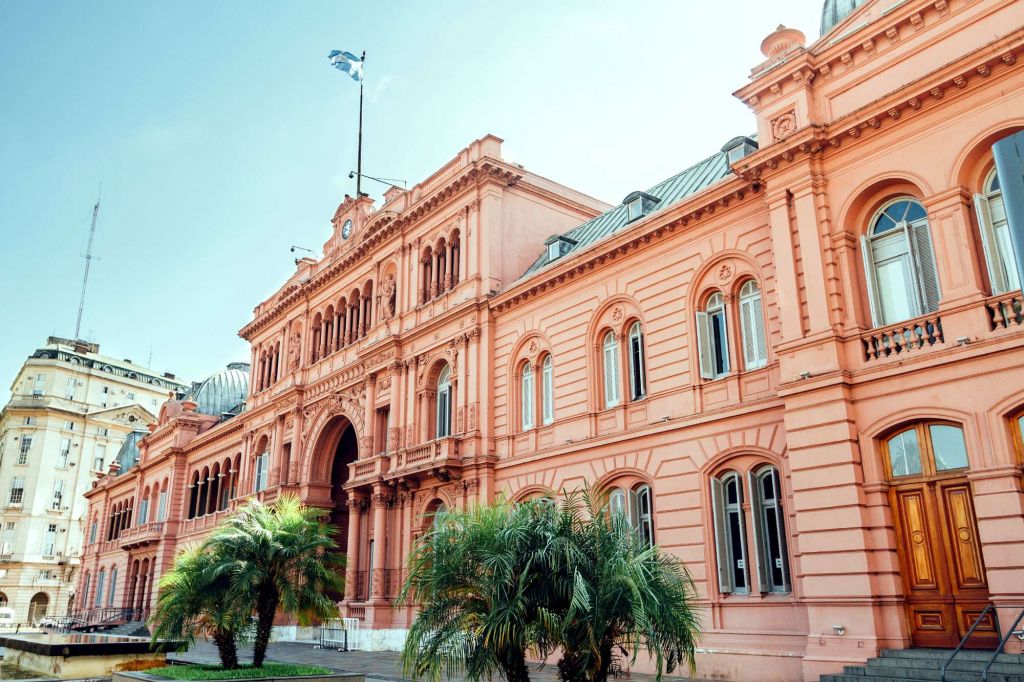
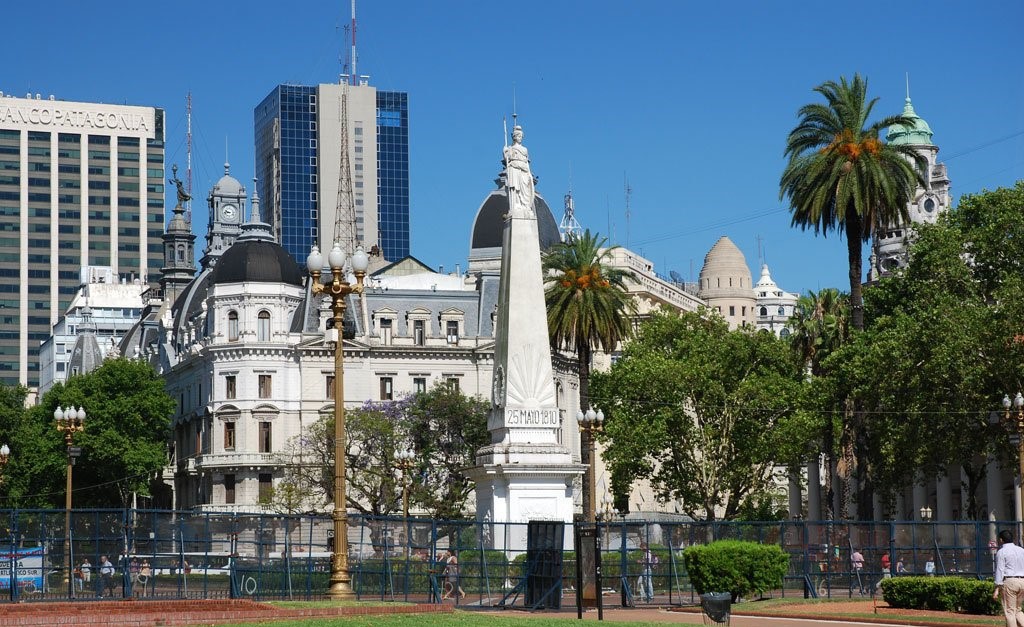


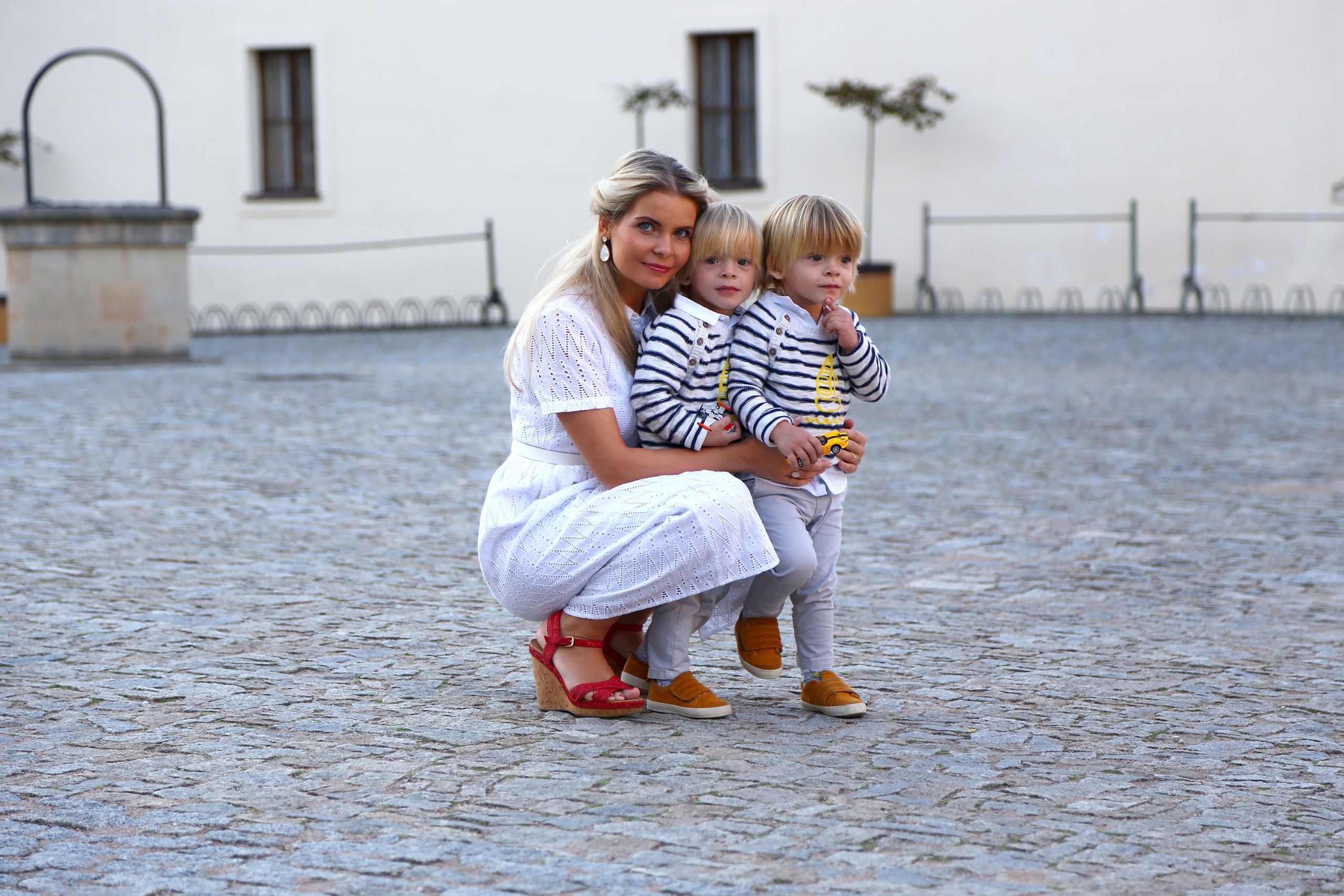

Leave A Comment